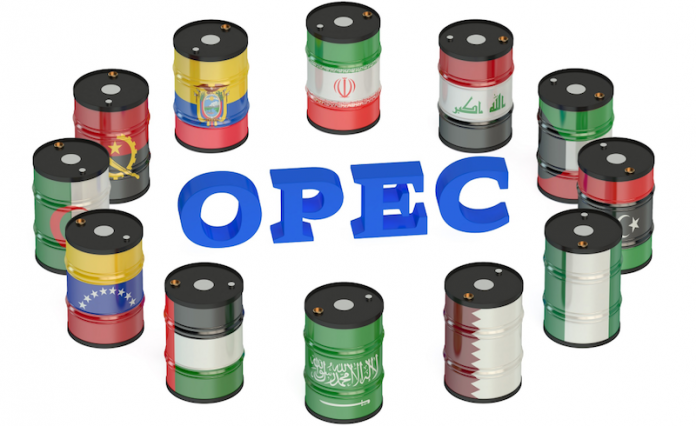 The Organisation of Petroleum Exporting Countries (OPEC) yesterday kept its global oil demand growth projections for this year and next unchanged.
The Organisation of Petroleum Exporting Countries (OPEC) yesterday kept its global oil demand growth projections for this year and next unchanged.
But the group lifted its forecast for supply on the back of rising members’ production quota.
Making this known in its August Monthly Oil Market Report (MOMR), the cartel pegged this year’s demand at 96.6 million barrels per day (bpd), up by just under six million barrels from last year and a further rise of 3.3 million bpd to 99.9million bpd next year, with demand exceeding 100 million barrels in the second half of the year.
The oil-producers’ group stated that the outlook for the global economy has improved slightly since its last report, adding that this was based on the assumption that it would be mainly driven by non-oil intensive sectors.
According to the OPEC report, petrol, diesel and light distillates would lead next year’s oil demand growth as road transport activity recovers, the industrial sector picks up steam and new ethane crackers are commissioned.
The report projected that consumption in China and India would outstrip pre-pandemic levels next year, “supported by a healthy rise in demand for transportation and industrial fuels.”
However, OPEC warned that Covid-19-related developments would need close monitoring over the coming months, especially when considering the usual colder weather in the northern hemisphere towards the end of the year.
On the supply side, last month’s agreement by the OPEC+ coalition to lift crude production quotas has prompted OPEC to raise its forecasts as non-OPEC liquids supply is now projected to rise by 1.09 million bpd this year and by a further 2.94 million bpd next year.
The revisions mainly reflect higher quotas for non-OPEC members of the OPEC+ alliance, such as Russia and Kazakhstan, but they also incorporate higher forecasts for countries outside the OPEC+ group, including the US and Canada.
But taking into account the higher non-OPEC supply, the group trimmed the forecast on its own members’ crude by 200,000 bpd to 27.4 million bpd this year and by 1.1 million bpd to 27.6 million bpd next year.
Meanwhile, oil prices fell yesterday after the International Energy Agency (IEA) said the spread of the Delta variant of the coronavirus would slow the recovery of global oil demand.
Brent crude futures fell 45 cents to $70.99 a barrel, after hitting a session high of $71.90, while US West Texas Intermediate (WTI) crude futures fell 47 cents to $68.78 a barrel. In the latest international energy watchdog’s monthly report, it said the rising demand for oil reversed course in July and was set to proceed more slowly for the rest of the year after the latest wave of COVID-19 infections prompted countries to embark on further restrictions.
“Growth for the second half of 2021 has been downgraded more sharply, as new COVID-19 restrictions imposed in several major oil consuming countries, particularly in Asia, look set to reduce mobility and oil use,” the Paris-based IEA said.
The IEA put the demand slump last month at 120,000 bpd and predicted growth would be half a million bpd lower in the second half than it had estimated last month, noting some changes were due to revisions in data.
“But the scale could tilt back to surplus in 2022 if OPEC+ continues to undo its cuts and producers not taking part in the deal ramp up in response to higher prices,” it said.
OPEC+, which had introduced output curbs to support prices and ease oversupply, agreed in July to boost output by 400,000 bpd a month starting in August until the rest of a 5.8 million bpd cut is phased out.


